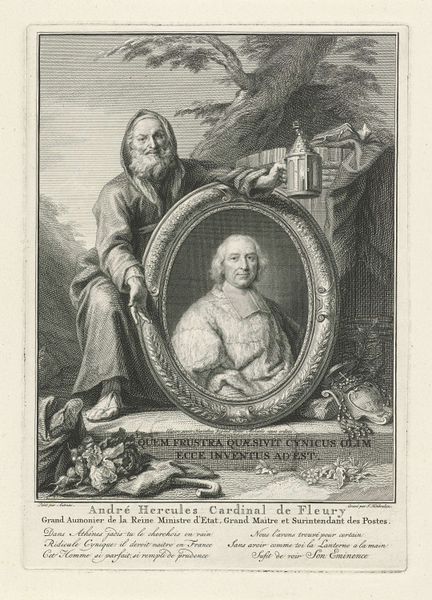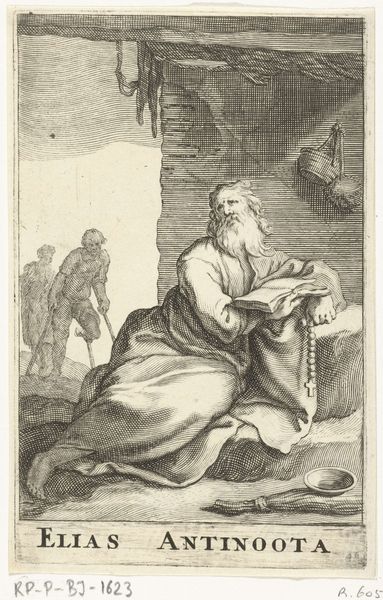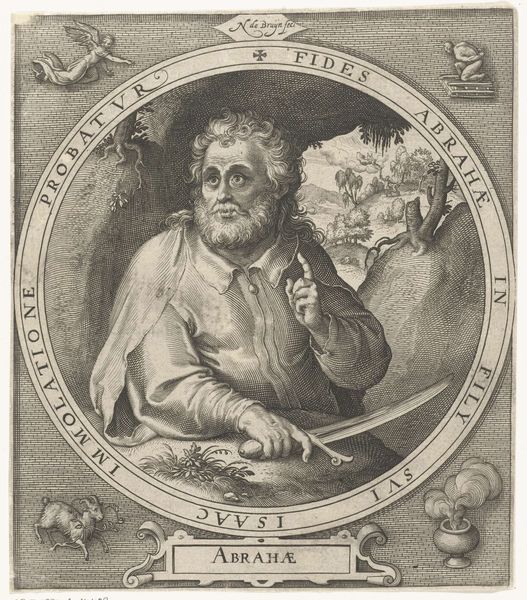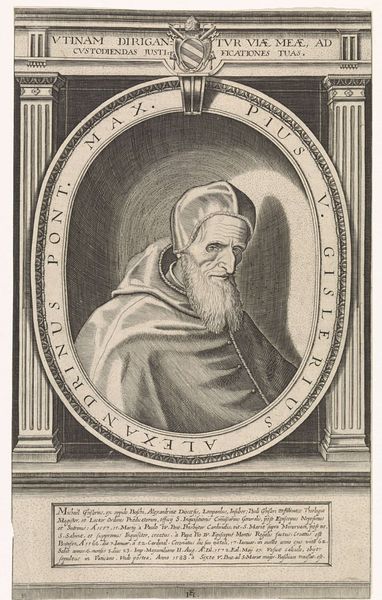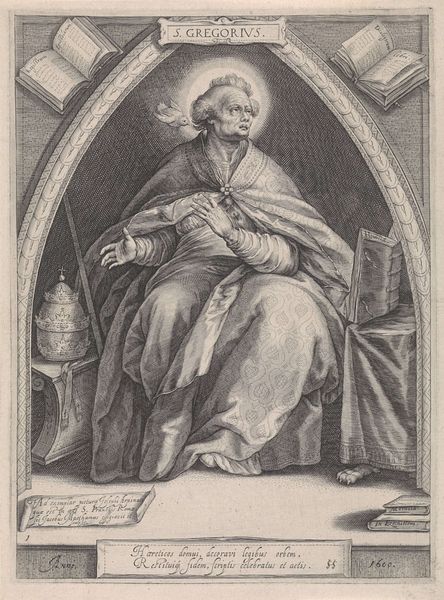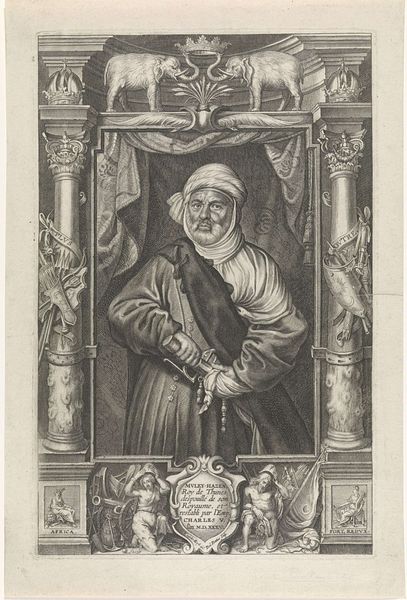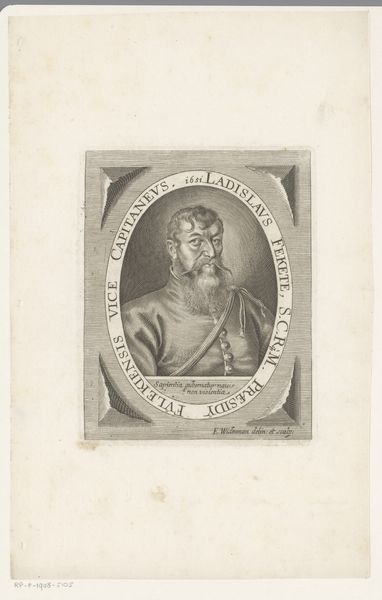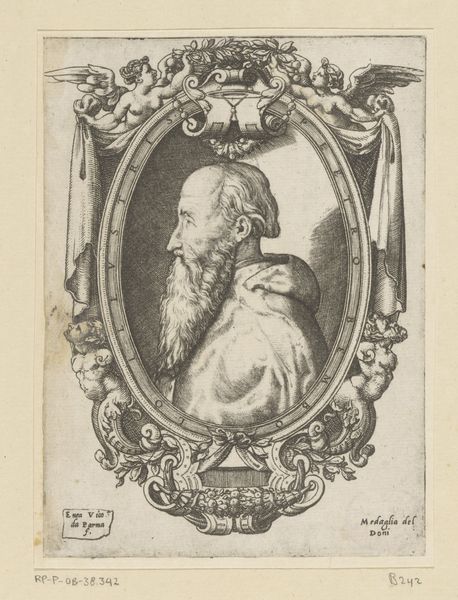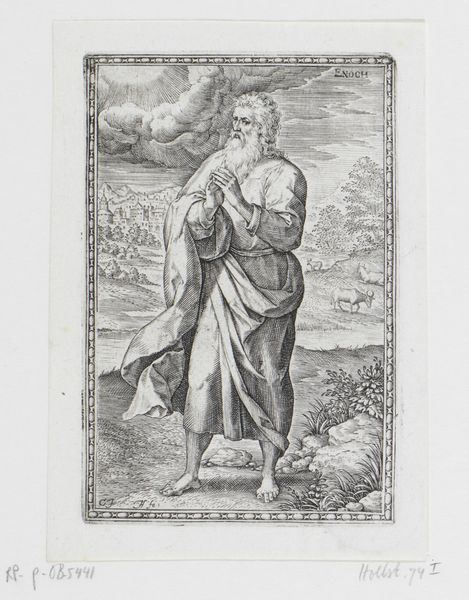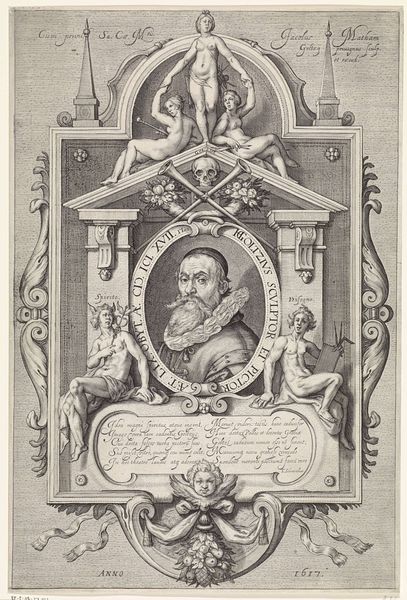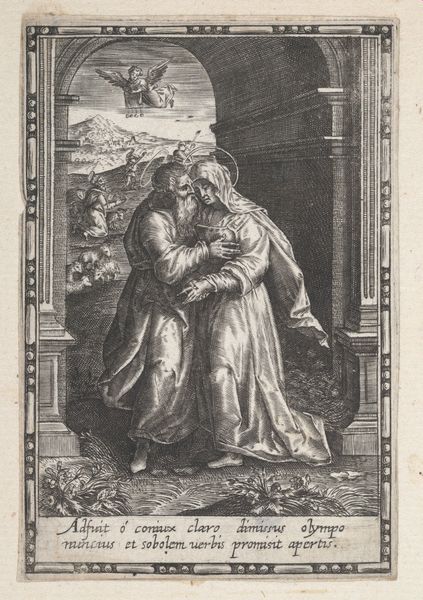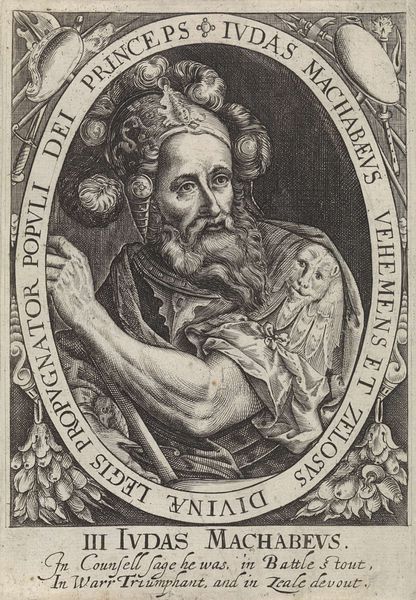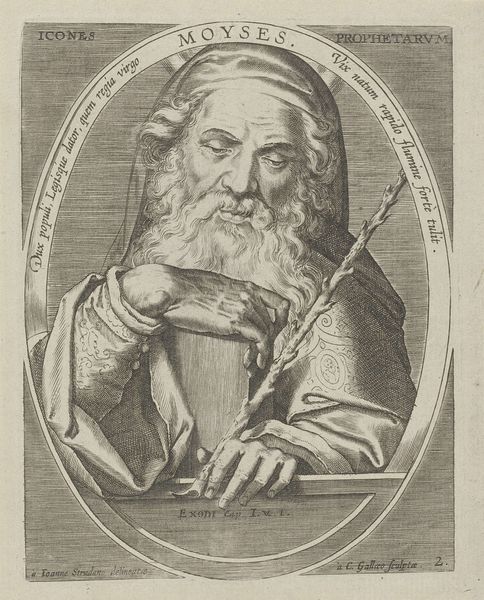
print, paper, engraving
#
portrait
#
baroque
# print
#
old engraving style
#
figuration
#
paper
#
line
#
history-painting
#
engraving
Dimensions: height 147 mm, width 101 mm
Copyright: Rijks Museum: Open Domain
Editor: We're looking at a print entitled "Portret van geleerde Paolo Sarpi," dating from after 1623, by F. Griselini. It's an engraving on paper. The density of the lines creates such intriguing textures. What strikes you when you look at this work? Curator: I’m immediately drawn to the compositional arrangement and the interplay of line. Consider how the circular medallion containing Sarpi's profile dominates the center, acting as a focal point. Notice the differing techniques; finer lines suggest spatial recession in the landscape backdrop compared to the denser lines describing the sitter. It establishes a clear visual hierarchy. Editor: So, you're saying the technical execution is key to understanding the piece? I guess I was more focused on the image of Sarpi and what he represented historically. Curator: Precisely. The very choice to use engraving as a medium carries significance, given its capacity for meticulous detail and sharp contrast. How does the linear precision influence your perception of the subject matter? The interplay between darkness and light, achieved through the controlled application of line, isn't just representational but also profoundly expressive. Consider how this might affect one's interpretation of Sarpi's intellectual character. Editor: That's something to think about, how the process informs the portrayal. It seems the technical skill creates the tone of the portrait itself. I hadn't considered the line work creating shadows as expressive. Curator: Indeed. Reflecting on how the artwork employs elements and formal techniques heightens one's interpretative and historical reading, does it not? Editor: Absolutely. Thinking about the medium has made me more curious about printmaking, but most importantly about how to view portraits with fresh eyes.
Comments
No comments
Be the first to comment and join the conversation on the ultimate creative platform.
